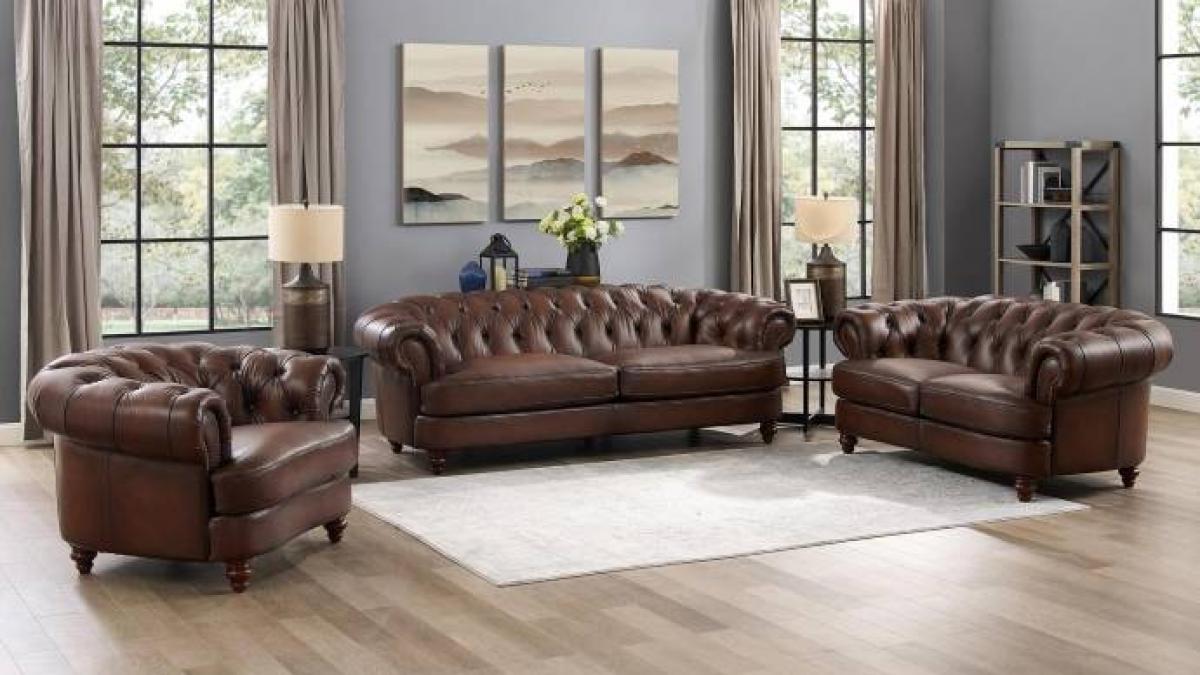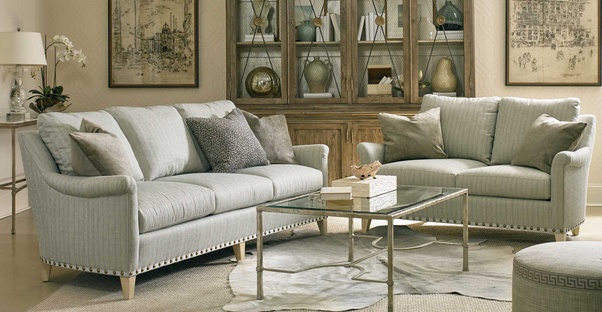What are the best high quality furniture brands?

Customer Question
What are the best high quality furniture brands?
The best brands of furniture are those that are custom-built, one piece at a time, using top quality materials.
Over the past couple of decades there has been a shift in the way high end furniture is made and sold in the U.S.
- Several high quality manufacturers have closed down over the past 20 years.
- Most of the larger retailers who used to specialize in high end furniture are also gone.
- Professional interior decorators now account for most of the residential furniture sold at this price level.

Shown above: Sofa and loveseat by Sherrill.
The Recession that began in 2007 was particularly devastating to high end furniture manufacturers and retailers.
- Highly skilled craftspeople, whose factory jobs disappeared, now operate their own small shops, producing custom pieces at the highest quality levels.
- High end furniture is actually more affordable now for many consumers.
- Individual artisans and furniture makers can sometimes be surprisingly affordable.
There are still several “best quality” furniture manufacturers remaining in the U.S.
A few of these companies include:
Many of these companies have maintained their extremely high quality standards for generations.
Several high end furniture manufacturers are lowering costs in some areas that minimally affect quality.
- Some of the companies listed above have switched from solid wood to plywood frames.
- Top quality plywood frames can still hold up for 25 - 30 years, but 5/4″ solid hardwood frames were good for 50 years or more.
- 8 way hand-tied coil foundations used to be a standard feature of high end upholstery.
- Some high end manufacturers have switched to less expensive alternatives that last equally long (or sometimes even longer.)
Mid-priced mass produced furniture has also declined in quality over the past 15 years.
- Over 90% of wood furniture sold in the U.S. now is built overseas.
- 60% of upholstered furniture is still made in the U.S.
- Despite significant increases in raw material and labor costs over the past 40 years, furniture retail prices have remained steady. This is due primarily to new technology, simpler designs and more efficient production.
A furniture industry study, conducted 15 years ago, indicated that consumers expected their new sofas to last 7 - 10 years.
A more recent study reported that consumers now expect their new sofas to last only 3 - 5 years.
That is a pretty accurate estimate of how long a modern mid-priced sofa can be expected to last before needing to be reupholstered or repaired.
This decline in quality can be directly linked to the appearance of huge mega-retailers and the disappearance of thousands of small local and mid-size regional furniture retailers.
40 years ago the 50 largest furniture retailers combined accounted for less than 5% of U.S. furniture sales. Only a handful had annual sales exceeding $100 million.
Today, U.S. furniture sales are controlled by a small number of huge mega-retailers. The 50 largest retail chains now control over 50% of all U.S. furniture sales. All have sales exceeding $500 million.
- Although this trend started at least 40 years ago, it accelerated tremendously during the past Recession.
- The furniture industry was one of the hardest hit sectors of the U.S. economy.
- During a four year period (2007 - 2010) 40% of all U.S. furniture retailers closed their doors.
This shift from small to large retailers has resulted in a serious deterioration to furniture quality among the major low and mid-priced furniture manufacturers.
- The small number of mega-retailers who control the bulk of furniture sales in the U.S. encourage cutthroat competition among the major manufacturers who are large enough to supply their needs.
- Price is by far the most important factor for the corporate buyers of these mega-retailers. These buyers basically set the prices they are willing to pay.
- To reach the prices demanded, large furniture manufacturers have had to cut costs (and quality) in every way possible that is not directly visible to the customer.
- Many customers have noted the increasingly generic look of furniture in the different chain stores, regardless of the brand name.
- Furniture designs are now dicated by technology. Styles that are simple and inexpensive to manufacture are crowding out those which require more time and skill to produce.
The resulting decline in expected lifespan of the furniture is actually an added benefit for these mega-retailers.
Furniture that wears out in 5 years or less generates higher overall sales than similar products that last for 10 or more years.
It is not as much of a benefit for the low and mid-priced manufacturers who are working on very thin profit margins for each product that they sell.
Ask the Furniture Expert